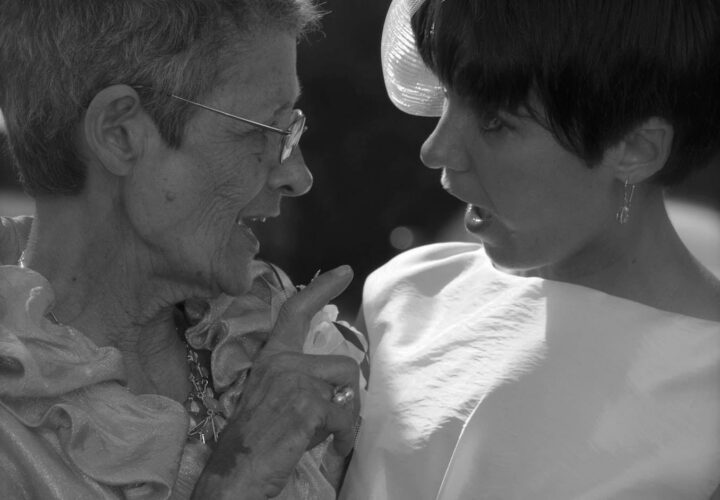Dementia care expert Christy Turner shares how caregivers can manage sleep schedules, activities and light levels to avoid behavioral issues, and combat the stress of sundowning.
Experiencing problems with disturbed or irregular sleep is common as people age. For people with dementia and their caregivers, these can be even bigger issues, particularly when it comes to seasonal changes and symptoms such as sundowning.
- Sundowning refers to the tendency for behavioral and emotional issues among dementia patients to worsen at night
- Seasonal changes can influence sleep schedules and depression, particularly among people with dementia
Being Patient spoke with dementia care expert Christy Turner about how caregivers can manage sleep schedules, activities and light levels to avoid behavioral issues, and encourage a less stressful life for everyone involved.
How people with dementia affected by light, seasons and sundowning?
Being Patient: We’ve talked to dementia patients who’ve said that seasonal changes are quite difficult for them, with winter time often associated with depression and sleep issues. What do we know about these experiences?
Christy Turner: We know it’s a problem, for sure. That’s typically when we see more of what’s called sundowning, which is where someone’s behavior changes later in the afternoon. We see it more often when there’s a time change and we come off of daylight saving time and back into standard time.
Our body uses environmental cues like the sun to identify what time of day it is and what we should be doing. If you’re already living with a diagnosis, [light changes] can cause confusion, and it makes it very tough to figure out what’s going on here. The other thing is that our body naturally starts producing less and less melatonin as we age. Typically people living with an Alzheimer’s diagnosis or another neurodegenerative disorder are over age 70, so it’s kind of a double whammy.
Being Patient: So when you talk to families impacted by dementia, everyone from patients to caregivers, how do they describe the Sundowning issue? What are the typical signs?
Christy Turner: It’s commonly referred to as a meltdown, where it’s this mounting frustration that just bubbles over. There’s a spectrum, so for some it’s far milder than with others, where people might become so frustrated that they’re throwing things or maybe grabbing at their hair. They’re showing an enormous amount of frustration, and an inability to soothe themselves. Some people do have a problem with hallucinations that are distressful, or sometimes delusions that are distressful.
Strategies for managing sleep schedules and energy levels
Being Patient: Are there strategies that can be employed to prevent this?
Christy Turner: Absolutely, so having a lot of light on in the house is really important, and it’s one of those things where depending on how you grew up it might be overlooked. Folks might think, “Oh, I’m not in that room so I should turn the light off,” or “It’s really cold outside so I should shut the blinds.” And if instead we can keep as much daylight as possible in the house, that is the best thing.
You can also add artificial light, and getting the lightbulbs that mimic daylight versus the fluorescents that you would often find in an office setting is really helpful. Helping them if they’re not sure how the day is going to go is also super super helpful so that they have a sense of predictability. People aren’t really always aware of a clock, and if you’re looking at visual clues like the sun in the winter, that’s a tough read.
Being Patient: Are you saying to set a schedule and let the person know ahead of time, like a fairly rigid schedule?
Christy Turner: I wouldn’t say rigid, I would say predictability is what’s really important. So, it can be fairly loose, like we’re going to have breakfast and then after that maybe we’re going to take a walk around the block, and then we’re going to maybe do a load of laundry or something. It doesn’t have to be scheduled down to the minute, but it gets even more important later in the day.
The witching hour is typically right around dinner time, so that period right before dinner time like 3:30 or so and on from there is when it can start. Often what will often happen is that caretakers want to start cooking dinner, and the person with dementia is sort of left to their own devices.
Pretty much nobody feels great after daylight saving time stops anyway, and when you add a neurodegenerative disorder on top of that, it’s even more challenging for the person. So, rather than leaving somebody to their own devices, or saying, “Oh, they always used to love watching the news, so I’ll just turn that on while I’m cooking dinner,” have them be involved with you.
So if you noticed that there’s a pattern where it starts to get darker or duskier around 4p.m., that’s the ideal time to have your person helping you, maybe with cutting up vegetables or shredding lettuce for the salad, maybe setting the table. Doing something that helps them feel like they have a sense of worth, of purpose, of value right there in the household, and something that is keeping their brain engaged in a sequence of events.
A lot of times we think, “Oh, cooking can be dangerous,” but people can stir a pot, they can mix ingredients, they can stay very involved. The main thing is that you’re doing something with them or helping them to be involved in something that they understand the steps to. That helps reduce anxiety and those feelings that can lead to a meltdown.
Being Patient: Related to that, if you keep someone with dementia busy and active during the day, will it be easier for them to fall asleep at night?
Christy Turner: Absolutely it will. The only thing I would say about that is it shouldn’t be keeping them busy just for the sake of being busy but engaged in things that they enjoy. Physical activity is often overlooked, again because people with dementia are often older, in their 70s or 80s, but not everybody.
So, keeping people as independent and active as possible for as long as possible is really important. Taking long walks with the dog for example, or going to the park. People can do a lot of things, and being in the place and expending that energy helps them get to that place later in the evening where they’re ready to go to bed.
Avoiding and dealing with meltdowns
Being Patient: You touched on the idea of giving people a sense of purpose to help them avoid having a meltdown. How critical is identity for people living with dementias?
Christy Turner: I would say as critical as all of the elements of my identity are to me or to anyone. The main thing that I always try to impart on people is that if we’re talking about a person living with dementia or a person living with Alzheimer’s or a person living with Lewy body dementia, whatever it is, it’s a person, first and foremost. It’s always a person that we’re talking about, so really recognizing and honoring the identity of that person and their values, what’s important to them, is always going to give a better result.
And I think we all do it in a way of trying to take a shortcut to how we can help them, and so we’re thinking, “If I know my person has this diagnosis of Alzheimer’s disease, then everything must be related to Alzheimer’s disease,” and that’s way too much of a shortcut. We need to really go back to who is this person, what has always been important to them.
For some people it might be their identity as a mom, and I do tell that to families all the time, let your mom be your mom. And a lot of times people will say, “Well I don’t want to worry my mom,” and nobody wants to worry their mom, but sometimes just the act of putting your head on your mom’s shoulder and just saying, “I just really need you mom,” that’s powerful.
Being Patient: We talked about meltdowns earlier, so what strategies are there for dealing with them? There’s an element of irrationality, and you’re not going to talk them out of it. When it becomes a behavioral tantrum or lashing out, what should caregivers do?
Christy Turner: In general the first thing you want to do is make sure the other person is safe. You can’t be right up in their grill trying to intervene because that’s typically going to make it a lot worse. Instead you can provide some distance and some visual supervision, but you also want to make sure that they’re not near anything that could potentially be dangerous, like a tripping hazard or something like that. So, ensure their safety first, and then it’s like a ladder.
If your person is at like 100 on an emotional scale, then that’s not the time to say, “Let’s talk in our quiet, indoor voice, or let’s listen to some classical music.” It just does not resonate. So instead, and it’s not like you’re going to start yelling at them, but you want to kind of really acknowledge, “You look really upset, how can I help?”
They may not even be able to hear you in that moment, but if they’re pacing for example you can walk parallel to them, and you can start slowing your walking down a little bit so that their pacing slows down a little bit, because people will typically mimic others. So, if they’re up high on the emotional ladder, you need to come in a little lower, and as you both keep coming lower it’s like coming down the ladder. That’s really helpful.
And it’s important to know that for people with healthy brains who get pissed off and have their own meltdown, it takes 18 minutes to get out of that lizard brain and back into self-soothing. So for someone whose brain is under attack by a neurodegenerative disorder, it’s going to take longer than 18 minutes, and that’s important to know. So part of it is some waiting it out, and the other thing is to avoid putting any fuel on their fire.
Don’t tell them you know what they’re feeling, don’t say that they shouldn’t feel upset. Sometimes the frustration just comes from feeling like they’re not being heard, so just back off, provide some visual supervision to make sure that they’re okay and that they know that you’re there when they’re ready.




